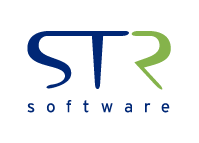It’s been a month since RMOUG and I’m just following up!? I’ve been keeping busy working on a new product day and night (coming soon) and even made it out to Redwood Shores for the Oracle eAM Summit (Enterprise Asset Management). We have sponsored the eAM Summit for the past two years as we created a solution that has really found a niche in the maintenance space -> You know all of those attachments that you have uploaded into your EBS database? Printing them out with their associated document (work order/purchase order/invoice) is a very manual process and we have automated this process to print the attachments when you submit your document through the concurrent manager.
So advertising aside, the eAM Summit was a great learning experience. A much more intimate conference where the users of the software did the majority of the presentations and really spoke honestly about their likes and dislikes, solutions to problems and business processes. There were a couple of tracks, one for EBS, one for JD Edwards and then one for PeopleSoft. Oracle Corporate really only did a couple presentations on future releases so there was not a major advertising slant to the conference. I’d recommend the show if you are an eAM customer.
One more follow up from the RMOUG show. I was asked how to setup BI Publisher Enterprise to output the formatted BIP data to a file on the local filesystem. The only way to do this short of utilizing the FTP channel is to burst the data to the File channel. Note that outputting the data to this File channel is not supported using the ‘Send’ button in BIP, it is only available through bursting.
As you know, bursting requires a bursting query and it’s in this bursting query where you specify the file channel and where to output the data on the filesystem.
The query in this case will have the following values for File output:
DEL_CHANNEL = FILE
PARAMETER1 = Directory
PARAMETER2 = File Name
So in our previous example of bursting and delivering a document, if we wanted to output the information to the file system, the query could be re-written to look like this:
select customer_id KEY,
'Overdue Invoices' TEMPLATE,
'RTF' TEMPLATE_FORMAT,
'en-US' LOCALE,
customer_format OUTPUT_FORMAT,
'FILE' DEL_CHANNEL,
'C:Temp' PARAMETER1,
customer_id || '-' || SYSDATE ||'.pdf' PARAMETER2
from demo_customers
Which would output a file named C:Tempx-17-MAR-10.pdf where x is the customer_id pulled from the database.


![Rollup of Product Updates [Spring 2024; v24.1]](https://www.strsoftware.com/wp-content/uploads/2023/02/Feature_Image_ProductUpdate_Wave-510x382.png)

